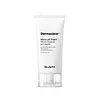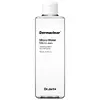What's inside
What's inside
 Key Ingredients
Key Ingredients

 Benefits
Benefits

 Concerns
Concerns

 Ingredients Side-by-side
Ingredients Side-by-side

Water
Skin ConditioningGlycerin
HumectantLauric Acid
CleansingMyristic Acid
CleansingPotassium Hydroxide
BufferingStearic Acid
CleansingGlycol Distearate
EmollientPalmitic Acid
EmollientGlyceryl Stearate Se
EmulsifyingCitrus Aurantium Bergamia Fruit Oil
MaskingPelargonium Graveolens Flower Oil
MaskingCitrus Limon Peel Oil
MaskingOlea Europaea Fruit Oil
MaskingQuillaja Saponaria Bark Extract
CleansingSalvia Officinalis Oil
MaskingPogostemon Cablin Leaf Oil
MaskingPinus Sylvestris Leaf Oil
MaskingCitrus Aurantium Dulcis Oil
MaskingCitrus Grandis Peel Oil
MaskingSalvia Sclarea Oil
MaskingAniba Rosodora Wood Oil
AstringentLavandula Angustifolia Oil
MaskingCedrus Atlantica Bark Oil
MaskingEucalyptus Globulus Leaf Oil
PerfumingMilk Lipids
Skin ConditioningJasminum Officinale Oil
MaskingSea Salt
AbrasiveArtemisia Absinthium Extract
Skin ConditioningMyrtus Communis Oil
MaskingRosa Damascena Flower Oil
MaskingVanilla Planifolia Fruit Extract
Skin ConditioningFerula Galbaniflua Resin Oil
AntimicrobialCoco-Glucoside
CleansingPolyquaternium-7
Acrylates/C10-30 Alkyl Acrylate Crosspolymer
Emulsion StabilisingSodium Cocoyl Isethionate
Cleansing1,2-Hexanediol
Skin ConditioningCitric Acid
BufferingTheanine
EmollientGlutathione
Copaifera Officinalis Resin
MaskingDisodium EDTA
Sodium Benzoate
MaskingWater, Glycerin, Lauric Acid, Myristic Acid, Potassium Hydroxide, Stearic Acid, Glycol Distearate, Palmitic Acid, Glyceryl Stearate Se, Citrus Aurantium Bergamia Fruit Oil, Pelargonium Graveolens Flower Oil, Citrus Limon Peel Oil, Olea Europaea Fruit Oil, Quillaja Saponaria Bark Extract, Salvia Officinalis Oil, Pogostemon Cablin Leaf Oil, Pinus Sylvestris Leaf Oil, Citrus Aurantium Dulcis Oil, Citrus Grandis Peel Oil, Salvia Sclarea Oil, Aniba Rosodora Wood Oil, Lavandula Angustifolia Oil, Cedrus Atlantica Bark Oil, Eucalyptus Globulus Leaf Oil, Milk Lipids, Jasminum Officinale Oil, Sea Salt, Artemisia Absinthium Extract, Myrtus Communis Oil, Rosa Damascena Flower Oil, Vanilla Planifolia Fruit Extract, Ferula Galbaniflua Resin Oil, Coco-Glucoside, Polyquaternium-7, Acrylates/C10-30 Alkyl Acrylate Crosspolymer, Sodium Cocoyl Isethionate, 1,2-Hexanediol, Citric Acid, Theanine, Glutathione, Copaifera Officinalis Resin, Disodium EDTA, Sodium Benzoate
Water
Skin ConditioningGlycerin
HumectantPolyglyceryl-4 Caprate
Emulsifying1,2-Hexanediol
Skin ConditioningSodium Citrate
BufferingCitrus Aurantium Bergamia Fruit Oil
MaskingDisodium EDTA
Citric Acid
BufferingCitrus Paradisi Peel Oil
MaskingPelargonium Graveolens Flower Oil
MaskingSea Salt
AbrasiveCocos Nucifera Water
MaskingSalvia Officinalis Oil
MaskingPogostemon Cablin Leaf Oil
MaskingButylene Glycol
HumectantAminobutyric Acid
Milk Lipids
Skin ConditioningGlutathione
Water, Glycerin, Polyglyceryl-4 Caprate, 1,2-Hexanediol, Sodium Citrate, Citrus Aurantium Bergamia Fruit Oil, Disodium EDTA, Citric Acid, Citrus Paradisi Peel Oil, Pelargonium Graveolens Flower Oil, Sea Salt, Cocos Nucifera Water, Salvia Officinalis Oil, Pogostemon Cablin Leaf Oil, Butylene Glycol, Aminobutyric Acid, Milk Lipids, Glutathione
 Reviews
Reviews

Ingredients Explained
These ingredients are found in both products.
Ingredients higher up in an ingredient list are typically present in a larger amount.
1,2-Hexanediol is a synthetic liquid and another multi-functional powerhouse.
It is a:
- Humectant, drawing moisture into the skin
- Emollient, helping to soften skin
- Solvent, dispersing and stabilizing formulas
- Preservative booster, enhancing the antimicrobial activity of other preservatives
Citric Acid is an alpha hydroxy acid (AHA) naturally found in citrus fruits like oranges, lemons, and limes.
Like other AHAs, citric acid can exfoliate skin by breaking down the bonds that hold dead skin cells together. This helps reveal smoother and brighter skin underneath.
However, this exfoliating effect only happens at high concentrations (20%) which can be hard to find in cosmetic products.
Due to this, citric acid is usually included in small amounts as a pH adjuster. This helps keep products slightly more acidic and compatible with skin's natural pH.
In skincare formulas, citric acid can:
While it can provide some skin benefits, research shows lactic acid and glycolic acid are generally more effective and less irritating exfoliants.
Most citric acid used in skincare today is made by fermenting sugars (usually from molasses). This synthetic version is identical to the natural citrus form but easier to stabilize and use in formulations.
Read more about some other popular AHA's here:
Learn more about Citric AcidCitrus Aurantium Bergamia Fruit Oil is the oil from the bergamot orange. It is native to Italy.
This ingredient is used to add fragrance to products. It contains limonene, linalool, and linalyl acetate.
The term 'fragrance' is not regulated in many countries. In many cases, it is up to the brand to define this term. For instance, many brands choose to label themselves as "fragrance-free" because they are not using synthetic fragrances. However, their products may still contain ingredients such as essential oils that are considered a fragrance.
When used topically, Citrus Aurantium Bergamia Fruit Oil is a photosensitizer due to its furanocoumarins. Photosensitizers make the skin and eyes much more sensitive to sunlight. Photosensitizers are linked to skin cancer.
However, more cosmetics using Citrus Aurantium Bergamia Fruit Oil are removing the furanocoumarins.
Bergamot oil was also found to have anti-inflammatory, antibacterial and antifungal properties.
Learn more about Citrus Aurantium Bergamia Fruit OilDisodium EDTA plays a role in making products more stable by aiding other preservatives.
It is a chelating agent, meaning it neutralizes metal ions that may be found in a product.
Disodium EDTA is a salt of edetic acid and is found to be safe in cosmetic ingredients.
Learn more about Disodium EDTAGlutathione is an antioxidant naturally found in our bodies. It is made up of three amino acids: glycine, cysteine, and glutamic acid.
As an antioxidant, it prevents oxidative damage to parts of our cell.
While glutathione is said to help with fading dark spots, the results from research are inconclusive. Further studies are needed. With that said, gluthatione has been shown to protect our skin from UV-B induced damage.
This ingredient is naturally occurring in plants, animals, fungi, and some bacteria.
Learn more about GlutathioneGlycerin is already naturally found in your skin. It helps moisturize and protect your skin.
A study from 2016 found glycerin to be more effective as a humectant than AHAs and hyaluronic acid.
As a humectant, it helps the skin stay hydrated by pulling moisture to your skin. The low molecular weight of glycerin allows it to pull moisture into the deeper layers of your skin.
Hydrated skin improves your skin barrier; Your skin barrier helps protect against irritants and bacteria.
Glycerin has also been found to have antimicrobial and antiviral properties. Due to these properties, glycerin is often used in wound and burn treatments.
In cosmetics, glycerin is usually derived from plants such as soybean or palm. However, it can also be sourced from animals, such as tallow or animal fat.
This ingredient is organic, colorless, odorless, and non-toxic.
Glycerin is the name for this ingredient in American English. British English uses Glycerol/Glycerine.
Learn more about GlycerinMilk Lipids isn't fungal acne safe.
Pelargonium Graveolens Flower Oil is the pressed oil of the Rose Geranium plant. It is volatile, meaning it evaporates off the skin.
Fragrant components of Rose Geranium include citronellol and geraniol. These may cause allergies and skin-sensitivity. We recommend speaking with a professional if you have any concerns.
The scent of Rose Geranium closely resembles traditional roses.
Learn more about Pelargonium Graveolens Flower OilThis ingredient is commonly known as Patchouli oil.
Patchouli exhibits slight antibacterial and antifungal activity from its patchoulol and alpha-patchoulene content.
However, it also contains known skin-irritating fragrances. A study from 2015 found limonene and camphor as active components of this ingredient.
Limonene and camphor are both known EU allergens.
Learn more about Pogostemon Cablin Leaf OilSalvia Officinalis Oil is an oil.
Sea salt has abrasive or exfoliation properties. It can sensitize and dry out the skin.
Water. It's the most common cosmetic ingredient of all. You'll usually see it at the top of ingredient lists, meaning that it makes up the largest part of the product.
So why is it so popular? Water most often acts as a solvent - this means that it helps dissolve other ingredients into the formulation.
You'll also recognize water as that liquid we all need to stay alive. If you see this, drink a glass of water. Stay hydrated!
Learn more about Water